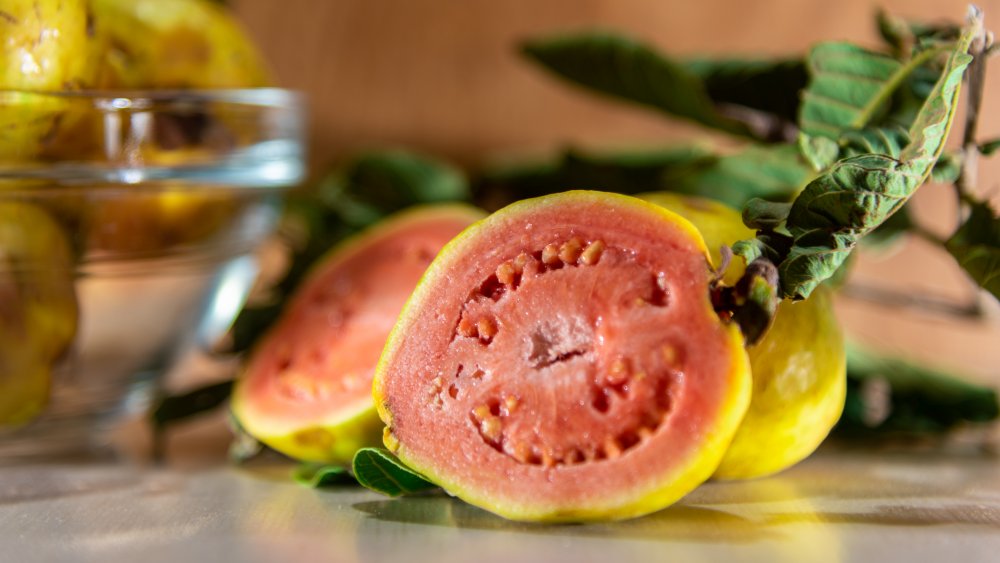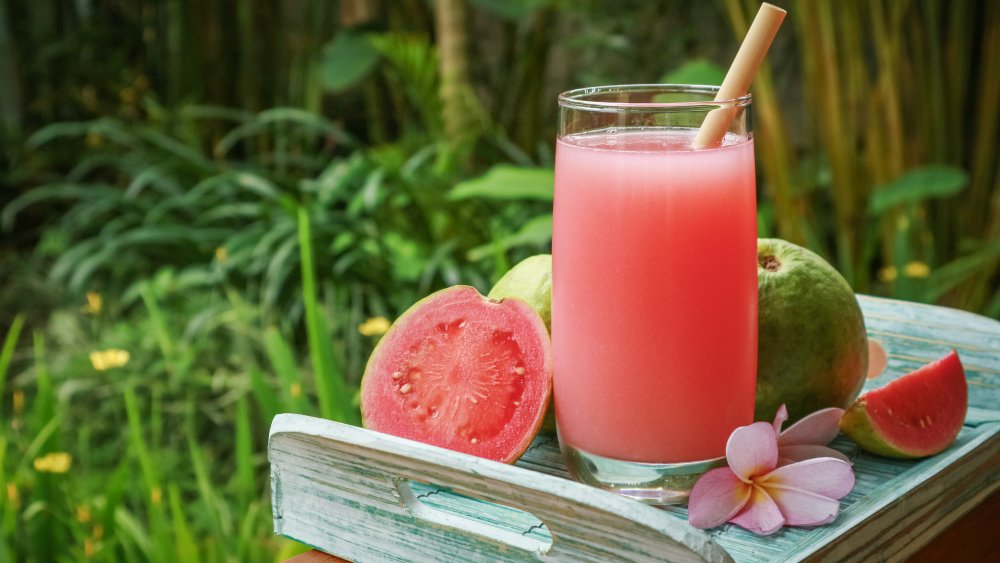Why You Should Start Eating More Guava
Is your only experience with guava from a tropical vacation drink menu? Do you pass it by without a second thought on your way to the bananas and apples in your local produce section? Do you avoid it because you don't quite know what to do with it when you get it home? Don't be intimidated by this exotic fruit, you'll love making this tasty treat part of your regular fruit rotation.
Found in Mexico, Central America, and the West Indies, according to California Rare Fruit Growers, guavas are also grown in Florida, California, and Hawaii. According to Epicurious, guavas taste a bit like a combination of a strawberry and a pear. Nutritionally, they are terrific. One guava has only about 37 calories (via Healthline). It is also rich in potassium and fiber and has more vitamin C than an orange.
Depending on the variety, the skin of the guava may be green, yellow, or greenish-yellow. The fruit's flesh can be white, yellow, pink, or red. So what do you do with guava? Before doing anything with it, make sure the guava is ripe. Ripe guavas are often light-green to yellow-green (though in some cases they have a pinkish hue). They are also tender when squeezed and give off a musky, sweet scent. If your guava is hard and green, wait for them to ripen at room temperature or speed up the process by storing them in a paper bag with an apple or banana.
How to use guava
According to the Live Life 365 YouTube channel, like many other fruits, you can simply dive into guava and take a bite because the whole thing is edible, including the outer skin. The YouTuber also says the seeds are soft, and there is no pit. You can also chop it, slice it in wedges, as you would an apple, or scoop out the center with a spoon. Frozen guava chunks are great for smoothies. You can freeze the chunks in resealable plastic bags for up to eight months, says Epicurious. They liquefy easily in a blender and are a good way to add sweetness and tropical flavor to your usual breakfast smoothie blend.
Finally, guavas are actually great for cooking thanks to their high levels of pectin, which partly gives pies, jams, and jellies their thick consistencies. Guavas make good jam, as this recipe from Mexico in My Kitchen demonstrates. Guava can also complement savory dishes, as in this recipe from the LA Weekly for roasted chicken thighs with a guava glaze. This recipe for sweet and sour guava curry from Manjula's Kitchen combines the sweet fruit with a spicy curry sauce.

